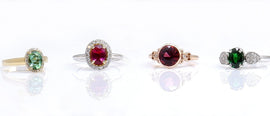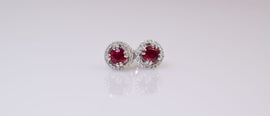Peridot, also known as chrysolite, is a green gem found in the upper mantle, making it one of only two gems not found in Earth’s crust. Not only is it one of the only gems not found in the crust, but it is also one of the oldest known gemstones, dating back to 1500 B.C., especially in Egypt. The emeralds Cleopatra famously wore are now being questioned as possibly being peridot gems.
The origin of the word “peridot” is unknown. It comes possibly from the Anglo-Norman word for opal, pedoretés, or from the Arabic word “faridat,” which means “gem.” It is found in Myanmar, China, the U.S., Africa, Australia, and Vietnam. The stone usually ranges from one to five carats. Peridot is the August gemstone as well as the 16th wedding anniversary gemstone.
The color of the gem is always an olive-green, yet the intensity depends on the level of iron in the crystal structure. This allows the green to be tinted with colors that range from yellow to olive to brown to just clear green. In the Middle Ages, peridot was believed to have the powers to heal, cure depression, and open the heart. Today, it is thought to be the stone of compassion, bringing good health, tranquil sleep, and peace to relationships by balancing emotions and the mind.
Peridot is usually cut in faceted shapes, table cuts, cabochons, and beads. The larger stones are vibrant and can make a statement in jewelry, while the smaller stones are best used in sets with multiples or as accents. In earrings, rings, or used in a combination with other stones, the bright, vivid colors in peridots will make any piece of jewelry stand out.



